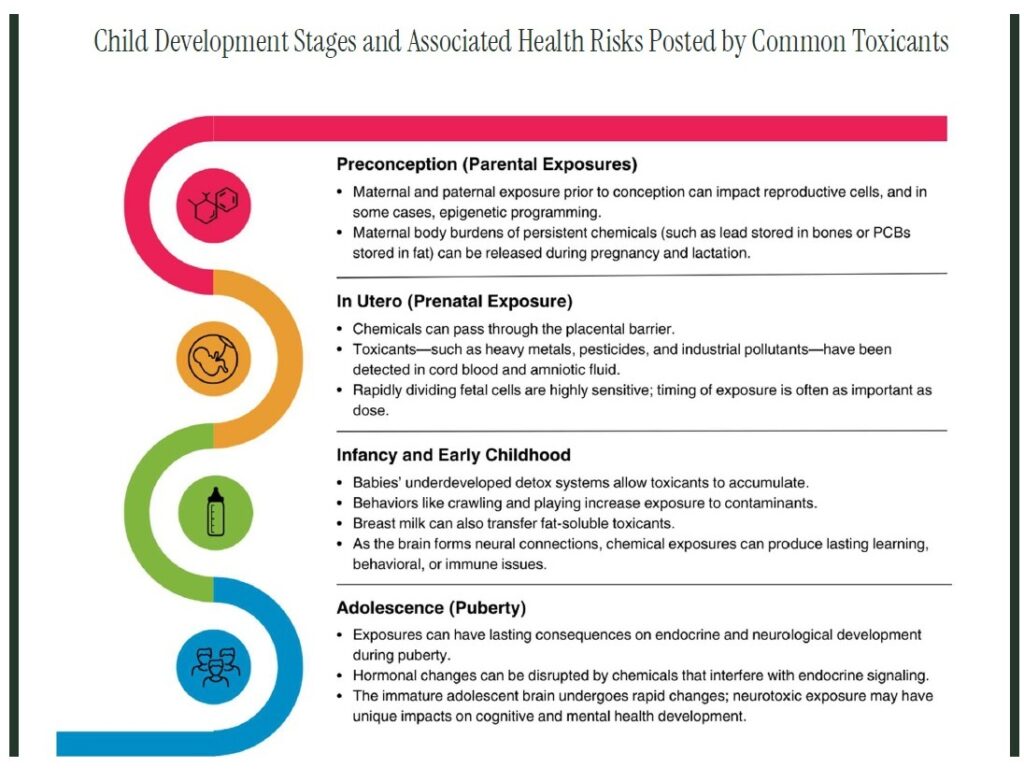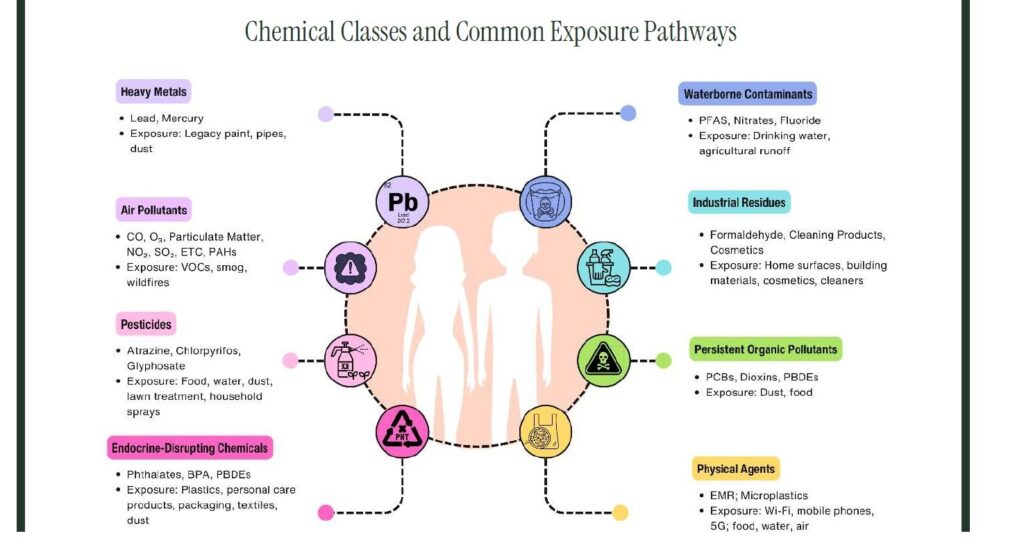Environmental chemicals are naturally occurring and synthetic substances found in air, water, and soil. They enter the environment through agricultural runoff, industrial discharge, or consumer product use. Examples include pesticides, heavy metals, and air pollutants. These substances can damage ecosystems, contaminate food sources, and affect human health.
Children are especially vulnerable to environmental chemicals because these substances accumulate in their developing bodies. Simply put, kids don’t have the same ability as adults to break down and excrete toxins. They also have a higher metabolism, which makes them more susceptible to the adverse effects of any detrimental chemicals they may ingest. Today, exposure to environmental chemicals begins in utero – and it continues through early childhood and adolescence.
Even if an individual substance is not especially harmful, the combined effects of chemicals can have adverse effects. Consequently, the cumulative load of environmental chemicals is used to assess health risks. That’s the focus of Section 2 of the Make Our Children Healthy Again assessment: the MAHA Report. The diet that America’s kids are eating is of special concern.
There are several categories of environmental chemicals that affect the food supply and, in turn, children’s health.
- PFAS are a large group of more than 12,000 synthetic chemicals that are used in food packaging and non-stick cookware. High levels of certain types of PFAS exposure have been associated with immune suppression and changes in cholesterol.
- Microplastics are plastic fragments smaller than 5 mm. They’re present in a variety of foods, including meat, fruits and vegetables. Some microplastics carry endocrine-disrupting chemicals that interfere with hormonal development or heighten the risk of obesity.
- Fluoride has long been added to municipal water supplies to fight cavities and tooth decay. However, there is a statistically significant association between exposure to fluoride above recommended levels and reduced IQ levels in children.
- Phthalates are added to plastics to improve flexibility, but these chemicals can trigger hormone dysregulation and development problems for babies in-utero and infants. The FDA has restricted the use of several phthalates in food packaging.
- Bisphenols are found in some consumer goods such as food and beverage containers. These industrial chemicals can interfere with hormone signaling and the human reproductive system. Today, many ultra-processed foods come in containers or other packaging.
- Glyphosate, an herbicide, may cause reproductive and developmental disorders as well as cancers, liver inflammation, and metabolic disturbances. Many varieties of corn have been genetically modified to resist glyphosate. This allows farmers to spray it directly on plants.
“No country in the world has fully accounted for the fact that children are often exposed to complex mixtures of chemicals”, the MAHA report explains. Yet children are especially vulnerable to these cumulative exposures, “many of which have no historical precedent in our environment or biology.” Pregnant women are advised to avoid eating mercury-laden fish, but who’s watching out for the kids?

